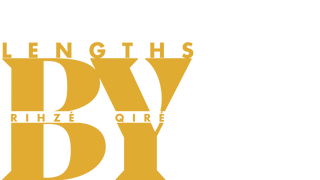Trichotillomania: Understanding and Coping with Hair-Pulling Disorder
Have you ever found yourself absentmindedly twirling your hair or pulling at it when you're feeling anxious or stressed? It's a common habit that many of us have, but for those with trichotillomania, hair-pulling can become a compulsive behavior that leads to significant hair loss and emotional distress.
Trichotillomania is a mental health disorder that causes people to repeatedly pull out their hair, often to the point of baldness. It can affect people of all ages and genders, but it's most commonly diagnosed in adolescents and young adults.
In this blog, we'll discuss what trichotillomania is, what causes it, and how to manage it.
What is Trichotillomania?
Trichotillomania, also known as hair-pulling disorder, is a mental health condition characterized by the repeated urge to pull out one's hair, often resulting in noticeable hair loss. The condition falls under the category of obsessive-compulsive and related disorders, as the hair-pulling is often accompanied by feelings of tension or anxiety that are relieved by the act of pulling out hair.
Trichotillomania can involve hair from any part of the body, but most commonly affects the scalp, eyebrows, and eyelashes. People with trichotillomania may spend hours pulling out hair, often to the point of baldness or noticeable thinning.
What Causes Trichotillomania?
The exact cause of trichotillomania is not fully understood, but it's believed to be a combination of genetic and environmental factors. Some research suggests that changes in brain chemistry may play a role, as well as imbalances in neurotransmitters like serotonin and dopamine.
Trichotillomania is also more common in people with anxiety disorders or depression, leading some experts to believe that it may be a coping mechanism for stress or emotional pain.
How is Trichotillomania Diagnosed?
Diagnosis of trichotillomania is usually made by a mental health professional, such as a psychiatrist or psychologist. They will conduct a thorough evaluation, including a review of symptoms, medical history, and any underlying mental health conditions.
One of the primary criteria for a diagnosis of trichotillomania is repeated hair-pulling that leads to noticeable hair loss or bald spots. Additionally, the hair-pulling must cause significant distress or impairment in social, occupational, or other areas of functioning.
How is Trichotillomania Treated?
Treatment for trichotillomania typically involves a combination of therapy and medication. Cognitive-behavioral therapy (CBT) is often used to help individuals identify and modify the thoughts and behaviors that contribute to hair-pulling. This may involve learning new coping strategies for stress or anxiety, as well as practicing relaxation techniques.
Medication may also be prescribed to help manage symptoms of trichotillomania, such as selective serotonin reuptake inhibitors (SSRIs) or antipsychotic medications.
In addition to these treatments, there are also several self-care strategies that can help manage trichotillomania, such as:
- Avoiding triggers, such as stress or boredom
- Engaging in activities that keep the hands busy, such as knitting or playing with a stress ball
- Keeping the hair short or wearing a hat or scarf to make hair-pulling more difficult
- Seeking support from friends, family, or a support group for people with trichotillomania
How Can Hair Companies Help?
For individuals with trichotillomania, hair loss can be a significant source of anxiety and embarrassment. Hair companies can play a vital role in helping these individuals feel more comfortable and confident with their appearance. Here are a few ways we can help:
- Offer a wide range of products: as a company that provides human hair wigs in various dimensions, textures, colors, lengths, and styles, we strive to offer a wide range of options for individuals with different degrees of hair loss. Our collection includes bobs, wear and go, pixie cut wigs, and headband wigs, all made with 100% human hair and high-quality materials that are comfortable and won't irritate the scalp.
- Provide educational resources: we also believe that education is important. That's why we provide educational resources on our blog about trichotillomania and hair loss, including information about the condition, its causes, and treatment options.
- Promote positive body image: our hair company is committed to promoting positive body image and providing high-quality human hair wigs to individuals with trichotillomania and other forms of hair loss.
- Encourage support groups: our intention is to create a community where people can share advice, suggestions, and experiences in the comments.
Conclusion
Trichotillomania can be a challenging condition to live with, but there are treatment options available to help manage the symptoms and promote hair regrowth. It's essential to approach those experiencing hair loss due to trichotillomania with sensitivity and empathy, and hair companies can play a significant role in providing support and resources to help individuals feel more comfortable and confident with their appearance.
At Lengthsrq, we're dedicated to helping individuals with trichotillomania feel confident and beautiful, one wig at a time.












Leave a comment